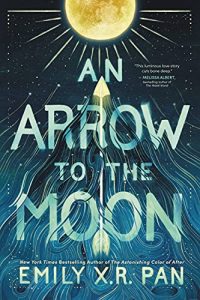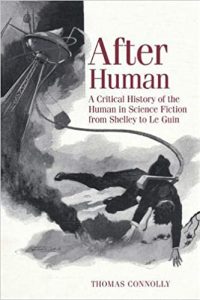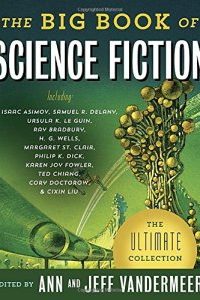Gary K. Wolfe Reviews The Way Home by Peter S. Beagle
 The Way Home, Peter S. Beagle (Ace 978-0-593-54739-7, $27.00, 224pp, hc) April 2023.
The Way Home, Peter S. Beagle (Ace 978-0-593-54739-7, $27.00, 224pp, hc) April 2023.
For decades Peter S. Beagle rebuffed suggestions that he write a sequel to his 1968 novel The Last Unicorn, arguing that ‘‘it was a young man’s work, and I am not quite him anymore in so many different ways.’’ When he finally relented in 2005, he came up with an ingenious way to reintroduce some of those beloved characters without impinging on the earlier story: he introduced a young girl named Sooz who, years after the novel’s action, tries to save her village from a marauding griffin by journeying to the castle of King Lir – and, as it turns out, meeting Schmendrick the Magician and Molly Grue along the way. When that story, ‘‘Two Hearts’’, was published in F&SF, it won both Hugo and Nebula Awards, partly because it’s a fine story, but partly, I suspect, because readers were so delighted to rejoin some of the most iconic characters in modern fantasy. But much of the appeal of the novelette also has to do with the precocious and lively voice of the nine-year-old narrator Sooz, and when Beagle reprinted it in his collection The Line Between, he wrote ‘‘The trouble now, of course, is that I can’t abandon Sooz, my young narrator. I’m going to have to bring her back and see where she wants to go… which will be, as I already know, into the real full-novel sequel to The Last Unicorn.’’
The Way Home both is and isn’t that sequel. It begins with ‘‘Two Hearts’’, which takes up less than a third of the book and which ends with Molly Grue offering Sooz a gift – teaching her a secret ‘‘little ripple of music’’ which Sooz is to memorize, but not to whistle again until her 17th birthday, after which ‘‘someone will come to you.’’ The rest of the book, a much longer story titled ‘‘Sooz’’, begins eight years later, on that fateful birthday. Instead of meeting Molly or Schmendrick, however, she catches a glimpse of an older sister, Jenia, she never knew she had. When her tearful parents explain that Jenia had run off with ‘‘the Dreamies’’ (her own term for the fae) when she was only four years old, the headstrong Sooz determines to enter the enchanted woodland and bring her sister home. Hardly is her quest underway when the story takes a surprisingly dark turn in a brief but brutal episode, after which Sooz forms a partnership with a strange bloodless woman named Dakhoun, who explains that she is from a race of people made of stone, and is on her own quest to find Death. By now, much of the original mythology of The Last Unicorn has been left behind, as Sooz learns to negotiate with the apparently childlike and impulsive Dreamies, while learning more secrets about Jenia and herself. The setting may be a familiar magical wood, but the adventure is Sooz’s own, and readers hoping for last-minute celebrity cameos are likely to be disappointed.
Beagle’s prose, though, is as crystalline as ever, and Sooz’s voice is at once a convincing evocation of adolescent search for identity, an insightful exploration of how friendships are made, and a sense of otherworldly wonder as genuine as that of The Last Unicorn. Except for Sooz’s reticent father, who has a brief role at the beginning and end of her quest, all the major characters are female (although I guess Dakhoun is technically a rock), and by limiting his cast of characters to a handful – mostly Sooz, Jenia, and Dakhoun – Beagle is able to develop a sense of intimacy rare in larger scale fantasies. The Way Home may be something of a chamber piece, but it’s an elegant one, and Sooz is as delightful and engaging a narrator as we could hope for as a guide through this somewhat more ruminative but no less magical Beaglescape.
Gary K. Wolfe is Emeritus Professor of Humanities at Roosevelt University and a reviewer for Locus magazine since 1991. His reviews have been collected in Soundings (BSFA Award 2006; Hugo nominee), Bearings (Hugo nominee 2011), and Sightings (2011), and his Evaporating Genres: Essays on Fantastic Literature (Wesleyan) received the Locus Award in 2012. Earlier books include The Known and the Unknown: The Iconography of Science Fiction (Eaton Award, 1981), Harlan Ellison: The Edge of Forever (with Ellen Weil, 2002), and David Lindsay (1982). For the Library of America, he edited American Science Fiction: Nine Classic Novels of the 1950s in 2012, with a similar set for the 1960s forthcoming. He has received the Pilgrim Award from the Science Fiction Research Association, the Distinguished Scholarship Award from the International Association for the Fantastic in the Arts, and a Special World Fantasy Award for criticism. His 24-lecture series How Great Science Fiction Works appeared from The Great Courses in 2016. He has received six Hugo nominations, two for his reviews collections and four for The Coode Street Podcast, which he has co-hosted with Jonathan Strahan for more than 300 episodes. He lives in Chicago.
This review and more like it in the May 2023 issue of Locus.
 While you are here, please take a moment to support Locus with a one-time or recurring donation. We rely on reader donations to keep the magazine and site going, and would like to keep the site paywall free, but WE NEED YOUR FINANCIAL SUPPORT to continue quality coverage of the science fiction and fantasy field.
While you are here, please take a moment to support Locus with a one-time or recurring donation. We rely on reader donations to keep the magazine and site going, and would like to keep the site paywall free, but WE NEED YOUR FINANCIAL SUPPORT to continue quality coverage of the science fiction and fantasy field.
©Locus Magazine. Copyrighted material may not be republished without permission of LSFF.







